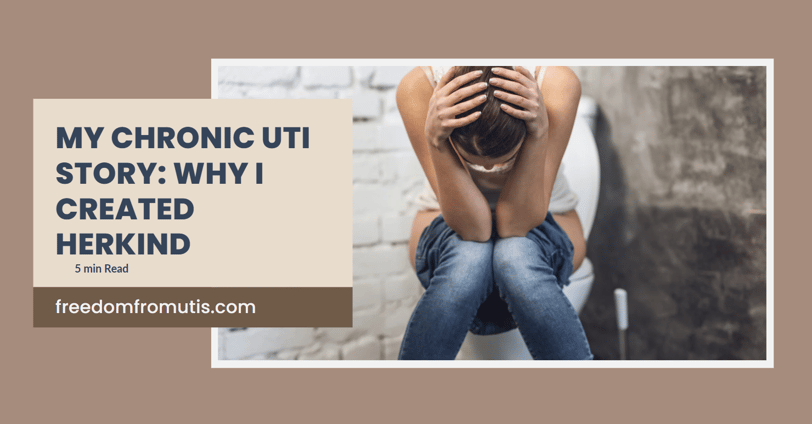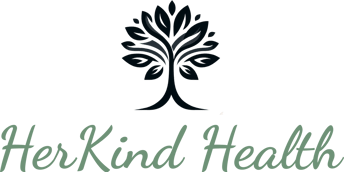My Chronic UTI Story: Why I Created HerKind
I’ve battled UTIs for most of my life—from quiet disruptions to life-altering pain. This post shares my real, raw journey through misdiagnosis, motherhood, and self-healing. If you’re tired of dead ends and still searching for answers, this story might be the first one that truly speaks to yours.
Barb Farley
4/20/20254 min read


I’ve lived this story. Now I help women write their own.
The Infection That Wouldn’t Let Go
My first urinary tract infection came when I was two years old.
By seventeen, they started making cameo appearances—usually tied to sex. Inconvenient, but manageable. I’d visit the doctor, leave with antibiotics, and feel better by afternoon.
I thought I had it handled. Until I didn’t.
When Things Escalated
At 22, UTIs stepped into a starring role.
I was in a long-distance relationship, and the infections came frequently—sometimes twice a month.
One specialist ordered a full workup. I still remember the IVP test—lying on a cold table, being told to urinate while watched. I was mortified. They said I had a collapsed bladder wall. That sounded serious… so I asked what we could do about it.
“Nothing,” they said.
The message was clear: this is your problem now. We don’t have answers.
I walked out of that office embarrassed, confused, and deeply alone. I didn’t go back. I didn’t see the point.
When you're young and your body keeps failing you, it’s hard not to internalize that failure. I started to believe maybe I was the problem. Maybe this was just how it was going to be.
Temporary Relief—or So I Thought
Marriage brought a rhythm, and sex became more regular. The UTIs eased slightly—three or four a year felt tolerable.
My grandmother had the same issue. I figured I’d inherited it.
Just something I’d have to live with.
Then came the babies.
Birth, Trauma, and Incontinence
My first child’s birth was traumatic.
The cord was wrapped around his neck. Every push cut off his oxygen.
He was too far down the birth canal for a C-section, so they used forceps to pull him out.
The doctors were focused on saving him, and I understand why—but in that moment, I became secondary. My body tore. It took nearly an hour to stitch me back together.
He didn’t cry when he was born.
They said it was fine—he’d swallowed meconium—but all I wanted was to hear that cry. To know he was okay.
I didn’t get to hold him.
They wheeled him to the observation nursery.
They didn’t want me in a wheelchair because of the stitches.
He was born at 10:40 p.m.
I didn’t see him until 6 a.m. the next morning.
I’ve never felt so alone or so scared.
Afterward, I struggled with incontinence. Eventually, I had a mesh sling placed. But still—the infections kept coming.
I kept hoping for resolution, but nothing ever felt truly healed. I was surviving. Not recovering.
The Missing Piece No One Talked About
No one told me the infection might not have cleared.
That it could be embedded in the bladder wall.
That antibiotics might not reach it.
No one ever said:
“I believe you. I know what’s really going on.”
So I started saying it to myself.
That moment changed everything.
I realized that my doctors didn’t know much more than I did.
And maybe—just maybe—I didn’t have to keep blindly trusting them.
I didn’t reject medicine. I just stopped giving it all my power.
I leaned into root-cause healing. Holistic approaches. My own intuition.
That’s when I started to come alive again.
Where I Am Today
Right now, I’m still on a low dose of antibiotics.
But that’s not the whole picture.
In 2021, I flew to Louisiana to meet with an embedded infection specialist—someone who finally saw the full story. I now meet with his nurse practitioner every six months. My case isn’t considered complicated—as long as I stay on medication.
But more than that—I’ve learned how to live in my body again.
I tracked my food and learned what triggered me.
I balanced my hormones and finally understood my flares.
But the biggest breakthrough?
Nervous system regulation.
I used to think mindset work was the answer. That if I just tried harder to be positive, I could invite healing. But every time it didn’t work, I felt like a failure.
It wasn’t until I learned how to regulate—not just reframe—that things began to shift.
That’s when I stopped working against my body and started working with it.
Perimenopause brought a new layer of complexity—more flares, more emotional terrain—but now I have tools. And when life turns up the volume, I know how to come back to baseline.
Baseline for me means no active symptoms. A sense of peace.
And the next goal? Coming off the antibiotics completely.
That’s where I’m headed.
And that’s the journey I want to walk with you.
Why I Created HerKind
The last ten years have been a masterclass in self-healing.
Not because I fixed everything.
But because I finally stopped abandoning myself.
I stopped outsourcing my power.
I stopped demanding perfection.
I stopped trying to force my body into submission.
And I started listening.
Tracking.
Adapting.
Regulating.
Rebuilding.
The biggest truth I’ve learned?
I spent so many years fighting my body—trying to control it, correct it, contain it.
But the greatest gift I’ve ever given myself… was harmony.
That’s what HerKind is about.
Not a one-size-fits-all protocol.
Not a miracle cure.
But a framework you can shape around your body, your life, your truth.
You don’t have to keep guessing.
You don’t have to do this alone.
You just have to begin.
